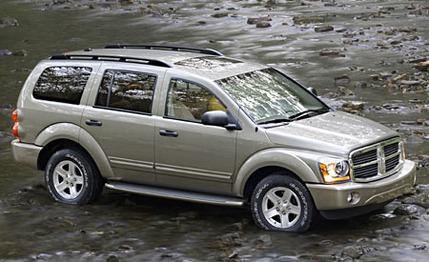 Road Test
Road Test
Sixty-three percent of the sport-utility vehicles for sale in 1998 had rigid rear axles, and 35 percent of those used old-school leaf springs-including the 800-pound gorilla of SUV sales, the Ford Explorer. So it is only in retrospect that the original Dodge Durango, introduced that same year, seems especially crude. Didn't seem as though many customers much cared at the time that Dodge's entry was based on a pickup's ladder frame, with a rigid rear axle using leaf springs, recirculating-ball steering, and a line of outdated engines more adept at shotgunning gallons of gas than making horsepower.
So powerful was the appeal of sport-utes, and so new and aggressive was the Durango's look, that people wanted to like it. While we were behind the wheel, folks at gas stations would run up to us and blurt, "Oh, that's cool. How do you like it?" When we'd reply, "Well, it's a bit crude," they'd ignore us and say, "Man, it's cool." They liked it enough to buy more than 150,000 of them that year.
By 1998, we were just starting to get a glimpse of the sophisticated new independently suspended unibody crossovers that were on the horizon. By 2004, only 45 percent of SUVs used rigid axles, and a mere 12 percent of those used leaf springs. See the writing on that wall? Dodge did.
Within two years of its introduction, the company started refining the Durango. A new, more powerful V-8 pinched from Jeep arrived for 2000. Over the years Dodge added rack-and-pinion steering for all Durangos, seemingly continuous interior improvements, and, eventually, rear disc brakes. Still, Durango sales were down by 30 percent in 2002 compared with 1998.
Even at first glance, the 2004 Durango is obviously something altogether new. Although it has grown between two and seven inches in all the four basic dimensions, this new vehicle is more precise-looking-dare we say svelte? Its fuselage is barrel-shaped in contrast to the brawny box of old. The steeply raked windshield adds a curiously minivanlike touch. Very out of step with the basic truck feel of the first Durango.
The more sophisticated look disguises the bulk of the new Durango-now nearly the size of a Chevy Tahoe or Ford Expedition. It can't be considered the in-betweener that the original truck was. It is jumbo.